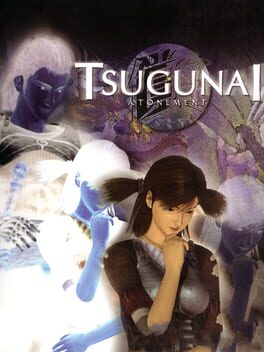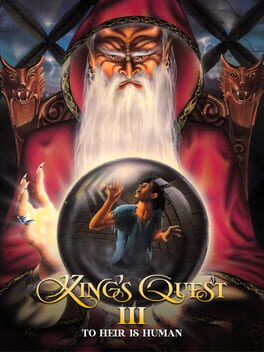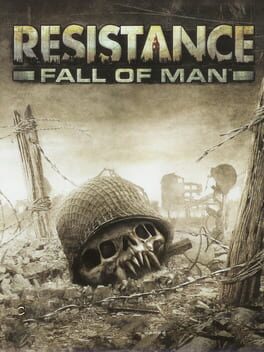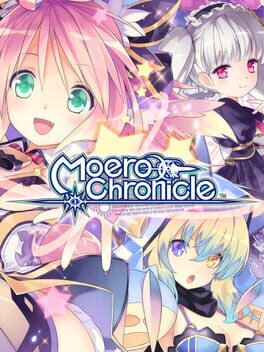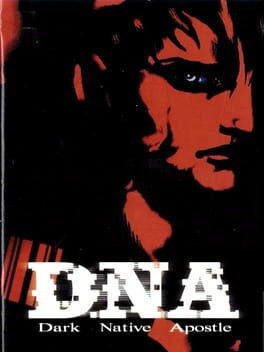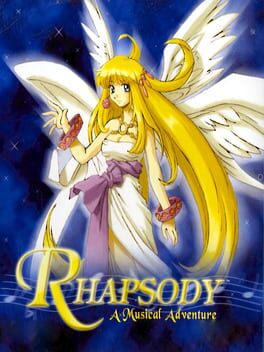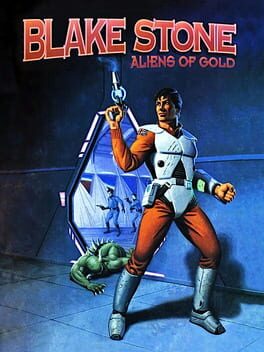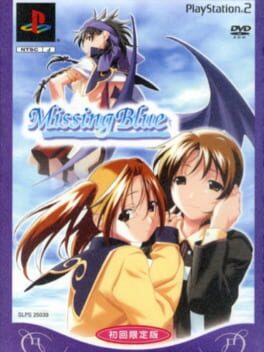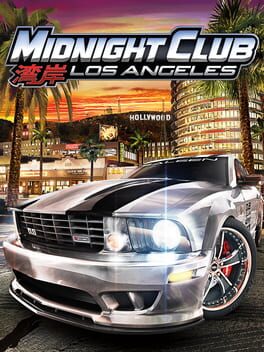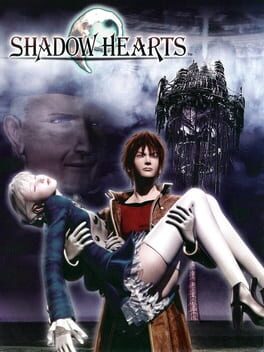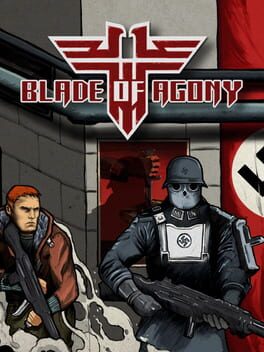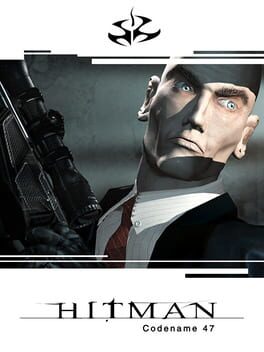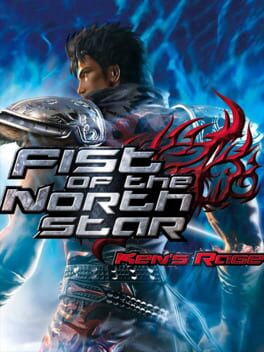WageYoge
2001
Another early PS2 RPG that feels like it really wants to be an adventure game instead. It's an interesting attempt but ultimately a failure. They researched a lot of Irish and Celtic folklore for the world-building, which is cool, but the end result still feels incredibly bland. The graphics are competent, but lack personality and style.
This game is also incredibly stingy with save points, and the battle system is unnecessarily painful. I briefly compared the Japanese and English versions, and the translation is way too literal and tone-deaf. Atlus USA usually has better localizations than this.
The one bright spot is the music by Yasunori Mitsuda, whose Celtic-inspired melodies fit with the world the game was attempting to portray. The soundtrack at least is up there with Chrono Cross and Xenogears.
This game is also incredibly stingy with save points, and the battle system is unnecessarily painful. I briefly compared the Japanese and English versions, and the translation is way too literal and tone-deaf. Atlus USA usually has better localizations than this.
The one bright spot is the music by Yasunori Mitsuda, whose Celtic-inspired melodies fit with the world the game was attempting to portray. The soundtrack at least is up there with Chrono Cross and Xenogears.
WWII with aliens. The weapon variety is interesting, allowing you to do cool stuff like shoot around the corner and through walls. Mechanically, it's weird. It's obviously imitating Call of Duty with the WWII setting, the mission structure, and the friendly AI, but in other ways it's very old school. No movement or aiming penalties, so you're free to circle-strafe and kite all you want. You can carry all weapon and grenade types simultaneously. No iron sights generally, but you can click R3 to toggle a zoomed-in view which is incredibly awkward. Health regenerates, but only in 25% chunks, so if you lose more than that, you have to find a healing capsule. Stealth is out of the question, because the enemies don't spawn until you come within range, and they aggro immediately. The enemies take A LOT of damage before going down, and don't seem to respond to getting shot much.
2014
I gotta give this game points for wholeheartedly embracing the sexual themes. The monster designs are a riot. As a dungeon crawler, it's simple but fun. And the music features some awesome wailing electric guitar solos.
But ultimately, it was too boring to finish. The monster girls are cute and all, but they're pretty interchangeable, so there's not much incentive to sub in a new one and level them up from scratch. At the same time, the attribute bonuses mean that certain combinations of party members are clearly better than others, so you lose out on some significant bonuses if you just pick your favorites for your team. Each girl only has a handful of abilities that unlock quickly, and after that, there's no incentive to level up further.
But ultimately, it was too boring to finish. The monster girls are cute and all, but they're pretty interchangeable, so there's not much incentive to sub in a new one and level them up from scratch. At the same time, the attribute bonuses mean that certain combinations of party members are clearly better than others, so you lose out on some significant bonuses if you just pick your favorites for your team. Each girl only has a handful of abilities that unlock quickly, and after that, there's no incentive to level up further.
It’s just your average, run-of-the-mill, cel-shaded resident evil bomberman game. Wait, what?
So you wake up as a test subject in a strange facility, with no memory, but you have the power to summon bombs out of thin air like Gambit or something.
The original Resident Evil games are a clear influence, as the game involves running back and forth through a large facility, unlocking doors, reading sinister lab reports, repairing power generators, interacting with computer terminals, that sort of thing. The first level in the sewer is not so bad, but the map gets much more complex in the laboratory proper, and you can only view the map at certain locations.
You also collect biochips that affect your attack attributes, and when equipped in certain combinations, also grant new abilities like a dash and a wall climb.
The overall concept is not bad, but it’s no Resident Evil.
Not only are the story and voice acting terrible, the combat is hot garbage. Aside from a weak melee attack, your basic weapon is a bomb, and in true Bomberman style, your own bombs will hurt you, and you have to constantly be on the move unless you get damaged by your own attacks. You can also find various limited-use guns and melee weapons.
But all of this is pointless, because you quickly realize that there is simply no reason to fight the enemies at all. They’ll just respawn anyway, and considering the huge amount of backtracking you have to do, the best strategy is to just run by them.
Expressing my thanks to this Youtube walkthrough which helped me get through the more difficult sections: https://www.youtube.com/playlist?list=PL0jciOZeBl6IHqOFeaVMU10F29q1sjtMD
So you wake up as a test subject in a strange facility, with no memory, but you have the power to summon bombs out of thin air like Gambit or something.
The original Resident Evil games are a clear influence, as the game involves running back and forth through a large facility, unlocking doors, reading sinister lab reports, repairing power generators, interacting with computer terminals, that sort of thing. The first level in the sewer is not so bad, but the map gets much more complex in the laboratory proper, and you can only view the map at certain locations.
You also collect biochips that affect your attack attributes, and when equipped in certain combinations, also grant new abilities like a dash and a wall climb.
The overall concept is not bad, but it’s no Resident Evil.
Not only are the story and voice acting terrible, the combat is hot garbage. Aside from a weak melee attack, your basic weapon is a bomb, and in true Bomberman style, your own bombs will hurt you, and you have to constantly be on the move unless you get damaged by your own attacks. You can also find various limited-use guns and melee weapons.
But all of this is pointless, because you quickly realize that there is simply no reason to fight the enemies at all. They’ll just respawn anyway, and considering the huge amount of backtracking you have to do, the best strategy is to just run by them.
Expressing my thanks to this Youtube walkthrough which helped me get through the more difficult sections: https://www.youtube.com/playlist?list=PL0jciOZeBl6IHqOFeaVMU10F29q1sjtMD
[Japanese version reviewed]
The pixel art is lovely—NIS was always good at that. It's a pleasant, comfy world, and the banter between Coronet and Kukuru is funny. The occasional musical numbers are also cute.
Unfortunately the dungeons are really lacking. They're just grids of screen-flipped squares, and the encounter rate is annoyingly high. The battle system has an SRPG-style tactical grid, but it feels superfluous and time-consuming, and the enemies appear in the same patterns on the same tactical maps over and over. As the game went on, I realized how they reused the dungeon graphics and force you to revisit sections multiple times.
I guess they ran out of time or money, but the game lacks content, and they had to pad things out. Even then, it's quite short as RPGs go, and I finished it in less than 15 hours.
The pixel art is lovely—NIS was always good at that. It's a pleasant, comfy world, and the banter between Coronet and Kukuru is funny. The occasional musical numbers are also cute.
Unfortunately the dungeons are really lacking. They're just grids of screen-flipped squares, and the encounter rate is annoyingly high. The battle system has an SRPG-style tactical grid, but it feels superfluous and time-consuming, and the enemies appear in the same patterns on the same tactical maps over and over. As the game went on, I realized how they reused the dungeon graphics and force you to revisit sections multiple times.
I guess they ran out of time or money, but the game lacks content, and they had to pad things out. Even then, it's quite short as RPGs go, and I finished it in less than 15 hours.
This was made in the same game engine as Wolfenstein 3D, but with a huge number of improvements like floor and ceiling textures, one-way doors, power barriers, explosions with splash damage, and enemies that fake death. Stealth is actually possible using the silenced pistol in some situations.
Also, none of the pushwall secrets can be broken like they were in Wolf3D if you push them from the wrong direction.
This is a really good early FPS, although it was outclassed immediately as Doom was released exactly one week later.
There's also a great source port written by a Ukrainian gentleman: http://bibendovsky.github.io/bstone/
Definitely worth your time if you liked Wolfenstein 3D.
Also, none of the pushwall secrets can be broken like they were in Wolf3D if you push them from the wrong direction.
This is a really good early FPS, although it was outclassed immediately as Doom was released exactly one week later.
There's also a great source port written by a Ukrainian gentleman: http://bibendovsky.github.io/bstone/
Definitely worth your time if you liked Wolfenstein 3D.
2001
[Japanese version reviewed]
Have you ever played a game and thought, hmm, nice graphics… polished, deep combat system… wow, this a solidly designed game. I hate it.
That’s how I feel about Devil May Cry.
So the story goes that Hideki Kamiya was experimenting with the combat system used in the Onimusha engine, and discovered that by timing certain attacks just right, he could launch an enemy into the air and juggle them indefinitely, like an inverted version of the old koopa shell trick from Super Mario Bros.
That type of combat—flashy, fast, and rhythmic—is something that Kamiya has been striving to perfect ever since, and that’s why I like to refer to this genre as the “combo juggler” as opposed to the vague term “character action game”.
But it just isn't my type of game. My brain doesn’t light up when I rack up that combo meter, and I don’t enjoy memorizing long chains of button inputs to activate specific attacks.
Graphically, the environments look great, but since the game is divided up into discrete, objective-based missions, you start to lose that cohesive environment and sense of place that Biohazard/Onimusha provided. The puzzles, those vestigial remains of what was going to be Resident Evil 4, are a joke. In Devil May Cry, the only thing that matters is the combat, and looking cool while you're at it. I get that, and maybe it’s unfair to compare Devil May Cry to its immediate predecessors Biohazard and Onimusha, because it really feels like a coin-op arcade game at heart.
Have you ever played a game and thought, hmm, nice graphics… polished, deep combat system… wow, this a solidly designed game. I hate it.
That’s how I feel about Devil May Cry.
So the story goes that Hideki Kamiya was experimenting with the combat system used in the Onimusha engine, and discovered that by timing certain attacks just right, he could launch an enemy into the air and juggle them indefinitely, like an inverted version of the old koopa shell trick from Super Mario Bros.
That type of combat—flashy, fast, and rhythmic—is something that Kamiya has been striving to perfect ever since, and that’s why I like to refer to this genre as the “combo juggler” as opposed to the vague term “character action game”.
But it just isn't my type of game. My brain doesn’t light up when I rack up that combo meter, and I don’t enjoy memorizing long chains of button inputs to activate specific attacks.
Graphically, the environments look great, but since the game is divided up into discrete, objective-based missions, you start to lose that cohesive environment and sense of place that Biohazard/Onimusha provided. The puzzles, those vestigial remains of what was going to be Resident Evil 4, are a joke. In Devil May Cry, the only thing that matters is the combat, and looking cool while you're at it. I get that, and maybe it’s unfair to compare Devil May Cry to its immediate predecessors Biohazard and Onimusha, because it really feels like a coin-op arcade game at heart.
2001
You'll get your first clue that this is not simply a cozy slice-of-life visual novel when you open the menu and see the gigantic 3D flowchart floating in black space.
The consensus is that this game can easily take 100 hours to complete, possibly double that if you want to see every route and ending. That puts it up there with Higurashi as one of the longest visual novels of all time, and unlike Higurashi, this was a single, self-contained release.
Shelving for now, I'm going to come back to this after I acquire a strategy guide.
The consensus is that this game can easily take 100 hours to complete, possibly double that if you want to see every route and ending. That puts it up there with Higurashi as one of the longest visual novels of all time, and unlike Higurashi, this was a single, self-contained release.
Shelving for now, I'm going to come back to this after I acquire a strategy guide.
Pretty good arcade street racer with a nice selection of cars. Unfortunately it's a bit grindy, and one mistake can ruin a 5 minute race. You can unlock cheat codes by finding secret barrels, but activating any of the cheats prevents you from gaining money, experience, or advancing the main story. I like it, but there are much better-looking racers these days. I also don't like how much it thrashes the optical drive on my PS3.
The graphics and music were impressive in their day (for an IBM PC anyway), but my love for this series has dwindled over the years.
There are so many cheap deaths and falling off stairs. I hate how fussy the Sierra Quest games are about character positioning. This game also has several dead ends that force a restart from scratch, such as if you break the shovel or use Cupid's arrows in the wrong place. It's just frustrating.
There are so many cheap deaths and falling off stairs. I hate how fussy the Sierra Quest games are about character positioning. This game also has several dead ends that force a restart from scratch, such as if you break the shovel or use Cupid's arrows in the wrong place. It's just frustrating.
2001
[Japanese version reviewed]
Debuting less than a month before Final Fantasy X in Japan, Shadow Hearts was the only other PS2 JRPG at the time that came even close to FFX in quality while also staking out its own unique identity.
The art direction is great, and the monster designs are suitably creepy.
I was intrigued by the historical horror setting and the blend of various occult traditions, but Shadow Hearts doesn’t live up to its premise. The depiction of the Japanese Imperial Army was a surprise, but in typical Japanese pop culture fashion, the game makes absolutely no political statements other than “War bad. Religious extremism bad. Summoning a Lovecraftian horror from outer space to utterly destroy humankind and remake the world according to the personal vision of a sorceror in a top hat—also bad.”
The judgment ring system is an entertaining gimmick, but ultimately a gimmick nonetheless. I’m not sure if the game even needs it, because the turn-based battle system is solid and well-balanced on its own. You have elemental affinities, Yuri’s monster summoning, the malice and sanity systems, resistances, and all kinds of status ailments to deal with.
There's no large overworld and very little grinding, so the game moves along at a brisk pace, but since the towns and most dungeons are small, the majority of the game feels like a succession of cutscenes punctuated by boss fights.
The game was clearly rushed, and the character you meet at the Nemeton Monastery even breaks the 4th wall to make a joke about it. There is a lot of optional endgame content, however.
Debuting less than a month before Final Fantasy X in Japan, Shadow Hearts was the only other PS2 JRPG at the time that came even close to FFX in quality while also staking out its own unique identity.
The art direction is great, and the monster designs are suitably creepy.
I was intrigued by the historical horror setting and the blend of various occult traditions, but Shadow Hearts doesn’t live up to its premise. The depiction of the Japanese Imperial Army was a surprise, but in typical Japanese pop culture fashion, the game makes absolutely no political statements other than “War bad. Religious extremism bad. Summoning a Lovecraftian horror from outer space to utterly destroy humankind and remake the world according to the personal vision of a sorceror in a top hat—also bad.”
The judgment ring system is an entertaining gimmick, but ultimately a gimmick nonetheless. I’m not sure if the game even needs it, because the turn-based battle system is solid and well-balanced on its own. You have elemental affinities, Yuri’s monster summoning, the malice and sanity systems, resistances, and all kinds of status ailments to deal with.
There's no large overworld and very little grinding, so the game moves along at a brisk pace, but since the towns and most dungeons are small, the majority of the game feels like a succession of cutscenes punctuated by boss fights.
The game was clearly rushed, and the character you meet at the Nemeton Monastery even breaks the 4th wall to make a joke about it. There is a lot of optional endgame content, however.
This is not only a great mod, it's one of the best FPS games I've played. Amazing work.
The levels are huge, with a variety of interesting locales. The combat is fast and deadly, and although there are no headshots (a limitation of the GZDoom engine?), the gunplay is still quite satisfying. A grenade in close quarters will wreak havoc. And it's great to play an FPS where the shotgun actually has some frickin range. Some rudimentary stealth is possible, but enemies will notice and start attacking you fast.
It also makes me realize how much I love the grandiose mythologized version of WWII, with the Nazis secretly researching futuristic tech while also unlocking ancient occult secrets. It's historical fiction, science fiction, and fantasy all in one.
The game is a tad difficult on the default setting, being designed for Doom diehards by Doom diehards, but the easier difficulties still provide a great experience. For a first playthrough, I think the difficulty one notch below the default is just right.
This game starts out good, but then it keeps getting better. An instant classic.
The levels are huge, with a variety of interesting locales. The combat is fast and deadly, and although there are no headshots (a limitation of the GZDoom engine?), the gunplay is still quite satisfying. A grenade in close quarters will wreak havoc. And it's great to play an FPS where the shotgun actually has some frickin range. Some rudimentary stealth is possible, but enemies will notice and start attacking you fast.
It also makes me realize how much I love the grandiose mythologized version of WWII, with the Nazis secretly researching futuristic tech while also unlocking ancient occult secrets. It's historical fiction, science fiction, and fantasy all in one.
The game is a tad difficult on the default setting, being designed for Doom diehards by Doom diehards, but the easier difficulties still provide a great experience. For a first playthrough, I think the difficulty one notch below the default is just right.
This game starts out good, but then it keeps getting better. An instant classic.
2000
When this game is good, it's extremely good. Huge open levels with dynamic actors and events playing out in real time. Stealthy gameplay revolving around both sneaking and hiding in plain site through disguises. A few short and intense gunfights. But the lack of any quicksave or checkpoint system really makes this frustrating.
Each level involves a lot of trial and error, and the game forces you to restart from the beginning every time. There are a limited number of continues after you die, but the guard alert status is not reset, so you're basically screwed.
Each level involves a lot of trial and error, and the game forces you to restart from the beginning every time. There are a limited number of continues after you die, but the guard alert status is not reset, so you're basically screwed.
[Japanese version reviewed]
You would think that a Fist of the North Star-themed Musou game would be an instant hit, but this didn't quite work out.
Ken is not really suited to a Musou-style game. He's a walking dumptruck that can only demolish 1-2 enemies at a time. That's true to the original character, but honestly he starts to feel weak compared to the wide-area destruction that Rei and Mamiya can unleash.
The basic combat is pretty good, except for the stupid invincibility frames. It's impossible to hurt a downed enemy, so you have to stand around waiting for them to get back up. Another annoying thing is that the trashmob enemies get noticeably more HP with every level, so upgrading your character doesn't feel like it does anything (or worse, it makes you feel progressively weaker).
The whole thing just gets really, really repetitive. That's typical for a Musou game, but the stages all have the same basic graphics and structure with no variety. In the manga-based legends mode (伝説編), you get to play as 4-5 different characters, but they reuse the same stages with only minor route changes, the same bosses, and mostly the same cutscenes.
The graphics aren't bad by PS3 standards, but the whole thing feels embarrassingly old school, with invisible walls, indestructible chain-link fences, and smashable crates containing baguettes and chicken breasts (rotating slowly in midair of course) for healing.
I did enjoy Mamiya's and Toki's movesets, though. I don't hate this game, but I got bored quickly. The sequel is supposedly much better.
You would think that a Fist of the North Star-themed Musou game would be an instant hit, but this didn't quite work out.
Ken is not really suited to a Musou-style game. He's a walking dumptruck that can only demolish 1-2 enemies at a time. That's true to the original character, but honestly he starts to feel weak compared to the wide-area destruction that Rei and Mamiya can unleash.
The basic combat is pretty good, except for the stupid invincibility frames. It's impossible to hurt a downed enemy, so you have to stand around waiting for them to get back up. Another annoying thing is that the trashmob enemies get noticeably more HP with every level, so upgrading your character doesn't feel like it does anything (or worse, it makes you feel progressively weaker).
The whole thing just gets really, really repetitive. That's typical for a Musou game, but the stages all have the same basic graphics and structure with no variety. In the manga-based legends mode (伝説編), you get to play as 4-5 different characters, but they reuse the same stages with only minor route changes, the same bosses, and mostly the same cutscenes.
The graphics aren't bad by PS3 standards, but the whole thing feels embarrassingly old school, with invisible walls, indestructible chain-link fences, and smashable crates containing baguettes and chicken breasts (rotating slowly in midair of course) for healing.
I did enjoy Mamiya's and Toki's movesets, though. I don't hate this game, but I got bored quickly. The sequel is supposedly much better.
